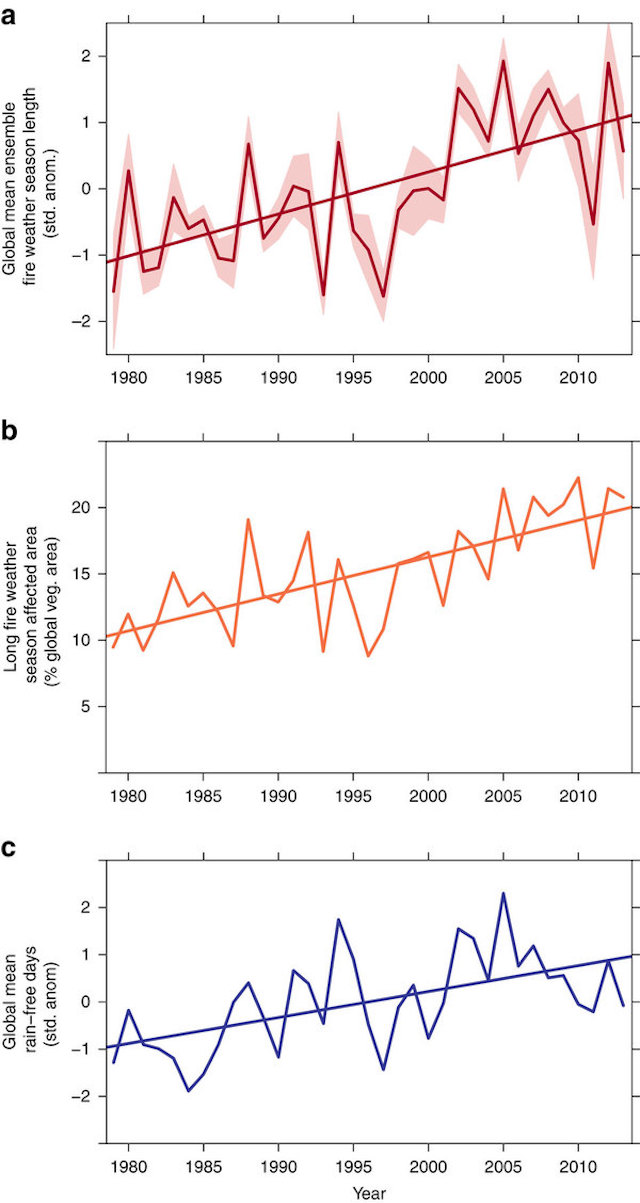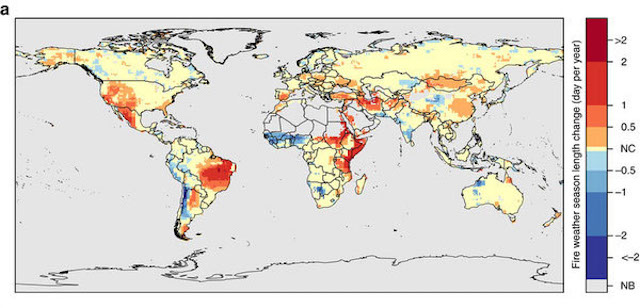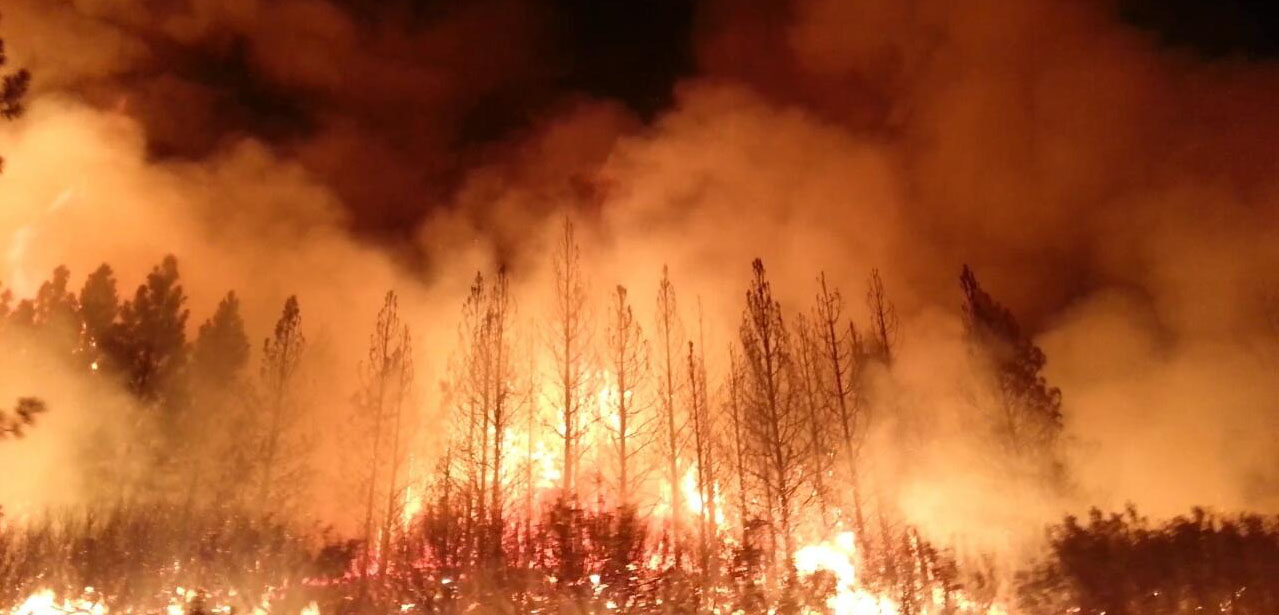That’s according to a study published this week in Nature Communications, which shows that fire weather seasons have, on average, grown 18.7 percent longer across the Earth’s surface since 1979. What’s more, the global burnable area affected by fire seasons has doubled, meaning areas that didn’t used to be fire prone are starting to look rather combustible. The reason? Hotter, drier conditions across vast swaths of our planet’s vegetated surface.
Literally, climate change is setting the world on fire.
Too Many Hot Days
Wildfires play a key role in fire-adapted ecosystems, creating open patches in forests and grasslands that promote biodiversity. Certain fire-adapted plants require a burn in order for their seeds to germinate. But the recent surge in extremely destructive fires, such as those we’ve seen raging across Alaskan and Canadian boreal forests this summer, is pushing many ecosystems beyond their disaster tolerance. Needless to say, it’s also causing substantial property damage and placing additional human lives in danger.
In their study, the researchers collected fire weather data — things like maximum annual temperature, number of rain-free days, and maximum windspeed — in three global meteorological datasets, from 1979 to 2013. They used the data to calculate several different fire danger indices and to estimate global fire weather season lengths.
Globally, fire season length has increased nearly 20 per cent since 1979, and the global vegetated area affected by longer fire seasons has doubled from 10 to 20 per cent. Both of these metrics (shown in panels a and b below) are strongly correlated with a global increase in the number of rain-free days (c):

To put these numbers in a bit more context, the researchers plotted their fire weather season findings on a map of the Earth. The figure below shows us areas where fire season length has been changing since 1979, with red indicating longer fire seasons and blue indicating shorter ones:

So, it’s nobody’s imagination that fire season is getting worse out West. Things have also been heating up across a large portion of the Amazon, East Africa, and the Middle East.
Longer fire seasons have another implication aside from the obvious one of more stuff burning like crazy: Extra global carbon emissions. The more forests and grasslands burn, the more carbon dioxide enters our atmosphere, and the less vegetation we have to mop up all that CO2 after the fact. The researchers point out that 1997, a series of brutal blazes in Indonesia released the carbon equivalent of 13 to 40 per cent of the world’s annual fossil fuel emissions. Fiercer fire seasons could represent a major climate feedback, triggering even more global warming, despite the fact that fires sometimes cool our planet in unexpected ways.
Let’s just hope Amazon starts rolling emergency fire blanket kits into Prime Day sale next year. Something tells me those are going to be a teensy bit more useful than lighters that are also pocket knives.
Source: Gizmodo | 20 July 2015














